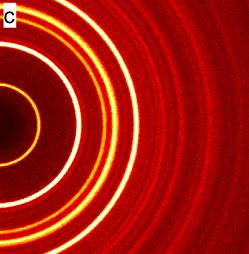You won’t find these symbols on most devices though (certainly not on any macbook as the picture suggests).
By removing the symbols they were able to shave the case down 0.0003nm, making it the thinnest and lightest laptop ever.
Courage!
Stunning and brave!
If they etched the symbol they could have reduced the weight of the laptop by 0.003g making it even better
But if they omit the symbol entirely, they save 0.003 cents per unit, but they will continue to charge the same inflated retail price for it and all their cult members will cover for them by gushing about how sleek the “minimalist” design is.
How brave!
You know it’s a thunderbolt connection on a MacBook. They stopped using the USB symbol when they used the usb for thunderbolt and stopped using the mini display port.
I didn’t take the image to be showing a macbook, it could just as easily be my computer or probably many others.
It could be, but combine the color looking very much like Apple’s space grey, the slimness of it, particularly how slim the lid is versus the body, and what looks like the MacBook’s classic black, rounded rubber stoppers on the bottom, I think it’s safe to say that’s meant to be an MacBook.
Also certain MacBook models tried to go to a single USB C port about a decade ago, and it was on the corner like that.
True, my latest Dell laptop has 3 “usb-c shaped ports”, there is 0 symbol anywhere close to them or the underside cover, you’re on your own as to what it supports, you have to find the doc online somewhere I guess.
Tbf my work Dell Latitude 5440 has a USB A with a SS5, an A with a SS5 and charging indicator, a C with a thunderbolt indicator, and a C with a battery and a thunderbolt indicator.
So at least some of their laptops do in fact have the indicators similar-ish enough to what the infographic shows.
Opie did not say targeted advertising OP said get rid of all advertising I was responding to that
It gets even better, each function of the port also needs proper support from the cable. Often cables do not support the full spec of usb to cut costs.
While the symbols in the post are often put on computers, for usb cables this is seldom done (only a few brands do).
Source: had to find a cable that supports both DP and PD to connect a portable external monitor after I lost the original cable. (1/9 cables worked)
Yes, this is incredibly annoying and it’s also the reason why some USB cables cost more than others, even they may look the same superficially.
One of those cables that don’t work is rated for like 120W, with gigabit transfer speed… But it refuses to transmit display… Like bruh
1080p at 60 Hz is 4.4 gigabit
USB-C video is usually DisplayPort Alt Mode, which uses a completely different data rate and protocol from USB.
Even using old 2016 hardware, a computer and USB-C cable that both only support 5 Gbps USB (such as USB 3.1 Gen 1) can often easily transmit an uncompressed 4K 60Hz video stream over that cable, using about 15.7Gbps of DisplayPort 1.2 bandwidth. Could go far higher than that with DP 2.0.
Some less common video-over-USB devices/docks use DisplayLink instead, which is indeed contained within USB packets and bound by the USB data rate, but it uses lossy compression so those uncompressed numbers aren’t directly comparable.
That sounds like a dedicated charging cable. So yeah, they will (if at all) only transfer data slowly and not support any extras features like displayport.
A dedicated charging cable wouldn’t have “gigabit speed”
No USB cable has “gigabit speed”. It probably has 480 Mbps (USB 2.0 standard).
Maybe he meant a 5 Gbps Gen1 cable. That would be “gigabit speed” but still rather slow by today’s standards and won’t support DP. They are pretty cheap these days, so wouldn’t be suprising to see left over stocks being sold as charging cables.
TL;DR: The USB Implementers Forum is ridiculously bad at naming, symbols and communication in general. (And they don’t seriously enforce any of this anyway, so don’t even bother learning it.)
This is the correct answer; after the whole USB 3.2 Gen 2 2x2 (hands of blue) bullshit, I wouldn’t trust that team to name a park bench in the middle of the desert. Let alone something important and universally used.
We could have gone for already proven and tested conventions like the resistor color codes and have a unique distinguishable icon for each features to attach when needed (like thunder icon for high power). But nope, we got this
USB 3.2 Gen 4 2x2 Hyper Turbocharged World Champions and Knuckles Platinum Editionbs instead.It basically gets longer every few years. At this rate, it’ll turn into an Amazon listing.
USB 3.5 Gen 3 2x2 20 Gbit Two-Sided DP PD USB 3 USB 2 USB 1 Compatible
The bench is called “Bench” (legacy name, it’s actually more like a concrete slab, but at the time it was more benchy that the previous bench which was just a pile of sand).
“Just plug your device in, you little bitch”
They are not bad at this. You are bad at understanding it.
Don’t get mad when you could instead learn something.
Yes it gets complex. It’s a 25-year old protocol that does almost everything. Of course it will be.
But the names are not hard if you bother to learn them.
They are not bad at this. You are bad at understanding it.
I work with this stuff, and I do understand it. Some of my colleagues are actively participating in USB-IF workgroups, although not the ones responsible for naming end user facing things. They come to me for advice when those other workgroups changed some names retroactively again and we need to make sure we are still backwards compatible with things that rely on those names and that we are not confusing our customers more than necessary.
That is why I am very confident in claiming those naming schemes are bad.
“don’t even bother learning it” is my advice for normal end users, and I do stand by it.
But the names are not hard if you bother to learn them.
Never said it is hard.
It is more complex than it needs to be.
It is internally inconsistent.
Names get changed retroactively with new spec releases.
None of that is hard to learn, just not worth the effort.
They’re bad because manufacturers want to pass their usb 2.0 gear as “usb 3.0 compliant”, which it technically is, and their usb 3.0 gear as “usb 3.2” because 3.2 Gen 1x1 is also 5gbps.
Also the whole alternate mode is awesome, but cheap hub chips don’t bother trying to support it and the only people who do are the laptop ports so they can save $.40 on a separate hdmi port.
And don’t get me started on all the USB-c chargers that only put out 1.5a because it’s just a normal 7805 on the back end.
They’re bad because manufacturers want to pass their usb 2.0 gear as “usb 3.0 compliant”, which it technically is, and their usb 3.0 gear as “usb 3.2” because 3.2 Gen 1x1 is also 5gbps.
The USB X.X is just the version of the standard and doesn’t mean anything for the capabilities of a physical device.
When a new standard comes out it superceeds the old one. Devices are always designed and certified according to the current standard.
Soooo…What are you talking about?
I’m talking about using the standard traditionally to denote the performance of the connection.
You don’t go around talking about your “Usb 3.0 device” that runs at 480mbps unless you’re trying to be a massive dickhole.
That’s what I’m talking about.
480mbps
A device or port that does 480mbps transfer speeds is a “Hi-Speed” device/port. That’s the real name and always has been.
It doesn’t matter what version of the USB spec it was certified under. If it was designed between 2000 and 2008 it was certified under USB 2.0 or 2.1
If that device was certified between 2008 and 2013 then it was certified under USB 3.0. That absolutely doesn’t make it a “SuperSpeed” device/port, but that’s more than clear when we use the real names.
Nobody uses that, they use the spec number because that’s what they’ve been taught, and they identify with it more than the incredibly stupid ‘full/high/super/duper/ultramegahyperspeed’ convention which the idiots at the siig decided to break again in 3.2.
Everybody literally on the planet agrees the system is moronic, you’re literally the only person who dissents, congratulations on that.
They come to me for advice when those other workgroups changed some names retroactively again
Can you give a specific example of this?
I’d love to believe all your ethos arguments if you could give me some logos.
There is some stuff to be learned, but especially with USB-C I’d say the vast majority are not labeled. There’s even some devices charged with USB C that can’t be charged with a PD charger and need an A to C cable. Phones are a great example where you have to look up the specs to know data transfer capabilities. Additionally they renamed the USB 3.0 standard which has been established for over a decade to USB 3.1 Gen 1 which is completely unnecessary and just serves to confuse. The standard was largely understandable with USB 3.0 generally being blue or at least a color other than black and on decently modern devices USB 2.0 would be black. With USB-C indication has just about gone out the window and what used to be a very simple to understand standard has now become nearly impossible to understand without having researched every device and cable you interact with.
There’s even some devices charged with USB C that can’t be charged with a PD charger and need an A to C cable
Phones with qualcomm chips briefly had their own proprietary fast charging standards that were not a USB standard. You are unlikely to be using those devices in 2024. But is it USB-IF’s fault manufacturers tried to create proprietary standards to collect royalties?
Additionally they renamed the USB 3.0 standard which has been established for over a decade to USB 3.1 Gen 1 which is completely unnecessary and just serves to confuse
No they didn’t?
The 5Gbps transfer rate introduced in 2008 is called “Superspeed” and it always has been.
USB X.X is not a port or a transfer speed. It’s the standard (ie a technical whitepaper). The standard is updated as time marches on and new features are added.
The standard was largely understandable with USB 3.0 generally being blue or at least a color other than black and on decently modern devices USB 2.0 would be black.
This was never a requirement, but it was nice to know which Type-A ports had 8 pins vs 4-pins.
With USB-C indication has just about gone out the window and what used to be a very simple to understand standard has now become nearly impossible to understand without having researched every device and cable you interact with.
For the most part you just plug it in and it works. If you need something specific like an external GPU connection, you can’t use your phone charging cable, sure. Is that really that big of a deal?
USB = Unintelligible Symbols of Bewilderment
Can we stop naming things “super speed” they are going to get surpassed in a few years then we are stuck with super speed being the slow option.
A small correction on USB PD…
It’s not just USB PD that supports power delivery: Standard USB from way back in 1.0 also supports power delivery to devices as standard, but it’s only up to 100mA in USB 1.0, 500mA in USB 2.0 and 900mA in USB 3.0, all at 5V.
USB PD is a dedicated power delivery USB protocol that supports much higher currents (up to 5A) as well as dynamically configured voltages (so, not fixed as 5V anymore) though it’s all negotiated so your 5V-only phones isn’t going to just get burned with 20V from a USB PD charger.
Since Power = Current * Voltage USB PD can put out quite a lot of power for supporting devices (the maximum depending on what both sides support), which means much faster transmission of power via USB which for example means faster charging of chargeable devices via USB with USB PD.
Anyways, the point being that even really old USB 1.0 can charge your device (just really really slow, though you’ll be hard pressed to find anything that doesn’t support at least USB 2.0 which can send 5x the current of 1.0 hence charge 5x faster than it), and that standard charging speed goes up with each new Standard USB generation since each has a higher maximum current than the previous one, so for example a standard USB 3.1 charger without USB PD support can still push a nice amount of power down the line to charge devices. It’s just that with USB PD things really take off (though only up to a shared maximum that both sides support) and it can push enough power to support larger devices such as full-blown monitors or even charging notebooks.
exept when manufacturer don’t give a fuck and print whatever or nothing next to the port. like always
What is the difference between USA and USB?
One connects to all your devices and accesses your data, the other is a hardware standard.
OIL
I legit have never seen the battery used at all. They often use a plug, a lightning bolt confusingly, or don’t even label it at all.
USB keeps changing their own standard every 2 years why bother learning it.
I mean, they update the standard to add new things. Is that bad?
They also change existing terms for no good reason.
The don’t.
But give me an example of what you’re talking about. I’ll explain.
USB3.2 gen 2, USB3.2 Gen2x2
The consumer facing names for those transmission specs are and have always been:
-
SuperSpeed 10 Gbps
-
SuperSpeed 20 Gbps
Unless you’re designing your own circuits you don’t need to worry about signaling rates (ie “Gen”) or lane configuration (Z×Y).
-
I have never seen one with SS, but maybe they removed that part in Germany.
For those that don’t know
Thank god that no one made a transfer speed standard of 88 Gb/s
That’s for USB 14.
Duplicated message
yet all I needed is a “this side up” symbol …
ai generated lol
What’s AI generated?
Me. Sigh.















